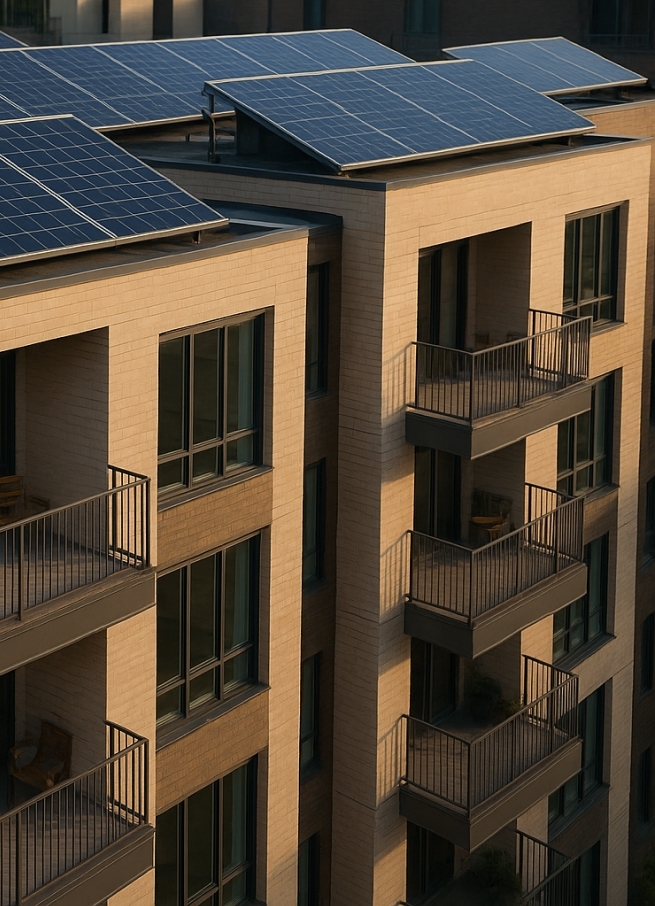Energy Inequality in California And How to Help | Ivy Energy

Energy Inequality in California and how Ivy can help Alleviate it
California is one of the most energy-efficient American states. However, it has got to this stature of being able to reduce carbon emissions at the cost of creating notable energy poverty. There has been an immense emphasis on combating global warming and its consequences by shifting to clean energy. However, there have been no concrete strategies that ensure that these efforts and resources to tackle climate change are uniformly accessible to all.
Almost 70% of residents in California are renters or fall under the low-income group. This makes it imperative to consider the income levels of such residents when introducing clean energy upgrades. Besides that, there is a whole set of challenges that renters and non-property owners face in trying to achieve savings by switching to cleaner energy.
We are going to discuss some of the primary issues revolving around the issue of energy poverty in California and how Ivy can help bridge the gap.
Low-income Households Suffer as Measures to Limit Natural Gas Usage Progresses
A considerable proportion of the income in a lower-class household is spent on energy. The inability to afford energy has led to several households living in homes with unsafe temperature levels or having to cut expenses on other necessities to live comfortably. There is an energy injustice owing to a lack of financial support for lower class and renters wanting to switch to more energy-efficient electrical fittings.
The restrictions around using natural gas have tightened over the recent years in California to maintain its green credentials. As a result, what awaits lower-class residents is the imposition of a regressive energy tax and growing dependence on electricity.
To add to that, the electricity prices have been raised exorbitantly in the last decade, with the prices growing 3x than the average since 2017. Both of these factors lead to a wide disparity, as low-income groups are burdened with growing energy costs. These lower-class households are mainly located inland where summers are terrible, leading to ample use of electricity for air conditioning. The same bans and restrictions do not make a significant difference to homeowners and businesses in elite areas of California where wealth is not an issue.
No Incentive for Renters to Switch to Energy Efficient Homes
One of the main barriers that have kept renters in California from enjoying savings by shifting to a more energy-efficient lifestyle is the lack of incentives to do so and the restrictions placed by landlords. There is only a certain extent to which renters can make the changes to adopt a clean energy lifestyle considering the lease contracts which only allow limited alterations to the home.
At the same time, there is also a lack of participation by landlords who can do more to be helpful in this area. A dearth of policies and resources that can help renters negotiate better with landlords further deepens the issues.
Some other factors that can be attributed to the failure of creating equal access to clean energy savings include:
- Fragmented markets and barriers to executing the programs
- Financial issues
- Unavailability of ample data to measure the success of programs
The good news is that there has been a growing impetus to create energy justice for all. Clean energy businesses focusing on creating channels and markets that make clean energy more accessible to low-income residents are on the rise. Such services can help make sure that the green credentials of California are not earned at the cost of its low-income group residents. Ivy Energy is one such service provider that is creating ripples with its services that help create better access to renewable energy.
Why Ivy?
Ivy believes that access to clean energy should not be difficult and has created a proprietary technology to help everyone in California adopt a sustainable lifestyle with solar energy with ease. One of the main challenges for renters is the lack of freedom to make any changes to the property they live on for accessing solar power.
This is where Ivy comes in. It offers a d virtual grid smart software that does away with the complexities of switching to solar, especially in a shared solar setting. There is a lot that Ivy has to offer and why it is the response to solar energy woes for renters in California.
Profit from Shared Solar
Ivy’s hassle-free solutions help property owners monetize the solar energy produced from the solar assets on their properties. With a shared solar energy system in place that offers savings for tenants, landlords can also maximize the asset value.
Accurate Billing and Transparent Usage Data
Ivy deploys a transparent process to help its users understand their energy consumption patterns. The software is a virtual utility for each apartment. It takes into account data of energy usage in real-time for allocating the required amount of solar energy in multi-family structures. This also helps ensure that there is no instance of over-billing and also offers a complete picture of the costs to tenants of all households.
Assured ROI for Property Owners
We understand that investing in something without knowing the returns it will yield can be a deal-breaker. This is why Ivy offers property owners a trial program to help them get better insights into how much they can save with the software before spending on it.
Ivy makes it easier for tenants and landlords to ensure compliance with Title 24 without the need for any hardware or lengthy installation. With shared solar, renters and non-property owners looking for alternate and affordable sources of energy. The cost-effective and transparent approach that Ivy offers can help propel a fair journey to sustainable living without creating further energy poverty.





